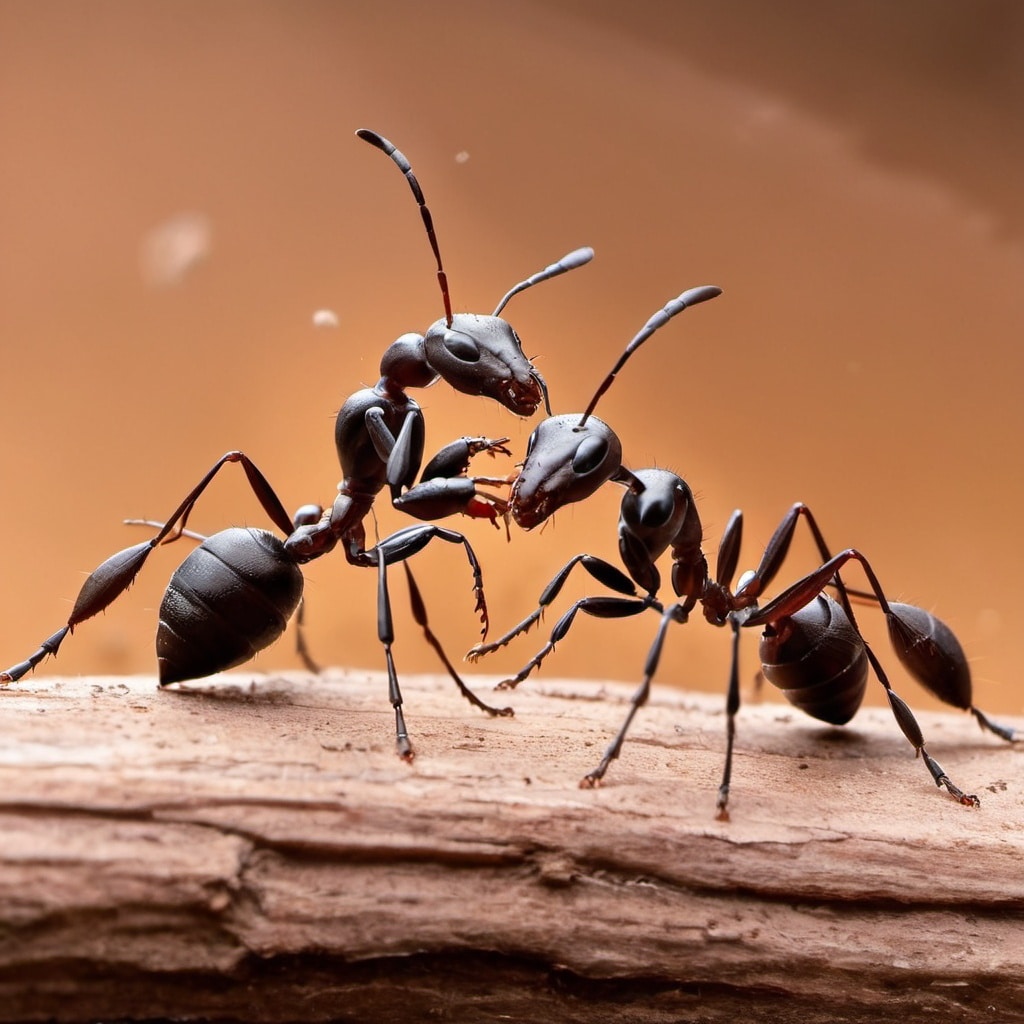Ants are a common insect found inside and outside of homes. They are from the family Hymenoptera, and are closely related to wasps and bees. They live in large colonies and divide the work of the colony amongst the individuals in the colony by caste. What kinds of ants are there? There are over 700 different species of ant found in the United States. Only about 25 of them are considered pests.
You can find ants in every part of your yard, and sometimes in your home. These insects are vast in number and are very common in the United States. Here, we will explore many different species of ant and discuss their traits and behaviors to better understand these interesting insects.
IDENTIFYING ANTS
The bodies of ants are separated into three sections. The head is the part with mouth parts, eyes, and the brain of the insect. On ants, the antenna are bent and have different characteristics. These antenna types are often used by entomologists to identify different species of ant. The thorax is the second part of the insect. This is the mobility center of the ant. All six of the legs are attached here.
The third part of the ant is the abdomen. This is the final section, and contains the vital organs and digestive parts of the ant. Between the thorax and abdomen are often smaller sections called nodes. The number of nodes and their shape are also clues used to determine the species of ant. Some nodes have a tooth sticking directly up from the node. Other characteristics such as color, amount and location of hair and size of the ant can be helpful in determining the type of ant.
| Ant Name | Major Forage Locations | Nest Locations | Food Preference | Size of Workers (in inches) | Sting | Unique ID Characteristics |
| Argentine | Inside where food & water are available | In soil near buildings & sidewalks | Sugars, syrups, fruit juice, honey and meat | 1/12 | No | |
| Big Headed | Inside or outside | In soil | Seeds, insects & aphid honeydew | 1/16 to 1/7 | No | Large headed soldiers |
| Carpenter | Mainly outside, but will invade structures | Decaying logs, lawns & structures | Plant & animal materials | 1/6 to 1/3 | Painful bite | Long-legged & swift moving |
| Cornfield | Corn fields | Most common in fields, but also around structures | Honeydew of other insects & sweets | 1/12 to 1/8 | No | Found in association with the aphids common on the roots of corn |
| Fire Ant (Native) | Outside | Outdoor in soil | Other ants & insects | 1/10 to 1/5 | Yes | Large flattened nest mounds; head of worker is wider than abdomen |
| Fire Ant (Imported) | Outside | Open sunny areas outside | Other insects & seeds | 1/16 to 1/5 | Yes | Nests are rounded & conical; head of worker is not wider than abdomen |
| Harvester | Outside; occasionally inside | landscaped areas, parking lots, sidewalks | Seeds & grains | 3/16 to 1/4 | Yes | Mounds are fan shaped; have a brush of long hairs on underside of head |
| Little Black | Outside | Under rocks; in lawns, areas with no vegetation | Honeydew & sweets | 1/16 | No | Jet black in color |
| Odorous House | Outside, but can invade structures | Sandy soils, pastures, wooded areas, in trees | Honeydew & sweets | 1/8 | No | Emits foul, musty odor when crushed |
| Pavement | Inside | Outdoors under stones, cracks in pavement | Sweets | 3/32 to 1/4 | Yes | Head & thorax highly sculptured with many parallel ridges running lengthwise |
| Pharaoh | Inside | Buildings in warm places | Syrups, jellies, juices, greases | 3/32 | No | Differ from thief ant by three segments in its antennal club |
| Pyramid | Inside & outside | Near harvester ant nests | Honeydew & other insects | 1/16 | No | Have definite pyramid or tooth on the thorax |
| Thief | Inside | Near other ant colonies to steal food | Greasy foods, cheeses, animal feces | 1/16 to 3/32 | Yes | Have two segments in antennal club |
All Information is from General Pest Control Applicator Training Manual Revised March 2014.
COMMON HOUSEHOLD ANTS
In many homes, the odorous house ant finds a way to share a space with us. This ant is somewhat difficult to eliminate because of its ability to produce more colonies by splintering. When a group of ants are separated from the original colony, the rogue ants will start a new colony by themselves. This can cause many colonies to be present in your home, especially if they have splintered because of improper use of over the counter pesticides. It’s important to contact your Tulsa pest control company for help.
Pharaoh ants are another interesting indoor ant. These insects are tiny and yellow in color. They are often found indoors in cardboard and small wall gaps. They are often preyed upon by thief ants. Their ants get their name by creating a colony very close to the pharaoh ant nest. They will sneak into the pharaoh ant nest and steal larva to feed their young upon. The ant world can be very cutthroat indeed!
LIFECYCLE
Ants’ lifecycle goes through a full metamorphosis. The queen will lay up to 300,000 eggs in as little as a few days. These eggs will hatch and produce a larva. The larva will grow until it pupates. In this cocoon like state, the insect will develop into a mature adult. Once it emerges from the pupa, it will perform colony duties until it dies. These insects live for the survival of the colony. Your Oklahoma exterminator will have more information.
A caste system is used by ants to distribute tasks to the individual of the colony. In ants, the females make up the majority of the individuals in the colony. The workers, soldiers and queen are all female. The females in the colony all come from a fertilized egg, meaning that they are a product of two sets of genes. The only males in the colony are reproductives. They are born from unfertilized eggs. This means that the only genetic donor is the queen. This helps diversify the population.
FIRE ANTS
Fire ants come in two different species in Oklahoma. There is the native fire ant, and the imported fire ant. The imported fire ant is an invasive species of ant not normally found in Oklahoma. This invasive species is very problematic in that it has pushed out the native fire ant in many areas. This ant is small, aggressive and can even be dangerous. Call your Tulsa exterminator for help dealing with these ants.
Fire ants do bite and sting. Imported fire ants can cause allergic reactions that can even cause people to go into anaphylactic shock. These insects create unsightly mounds all over the landscape and heavily infest areas. Infestations of 20 to 30 colonies per acre are quite common. The native fire ant is an important predator to other ants. It helps to keep populations under control. But these ants are not as aggressive as their invading neighbors.
ELIMINATING ANTS FROM YOUR HOME
Ants are a common household pest. If you are having any issues with this pest or any other, it is time to call in an experienced Oklahoma pest control company. Here at TermMax Pest Control, we can get your house back in order quickly. We service the greater Tulsa area including Bixby, Jenks, Sapulpa, Pratville, Owasso, Sand Springs, Coweta, Turley, Broken Arrow, Claremore, Catoosa and much more. Contact us today for a free estimate. We are here to help!



